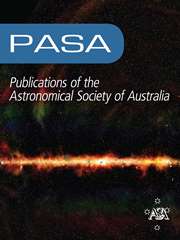No CrossRef data available.
Article contents
Binary population synthesis of the Galactic canonical pulsar population
Published online by Cambridge University Press: 23 September 2025
Abstract
Pulsars are rapidly rotating neutron stars that emit radiation across the electromagnetic spectrum, from radio to γ-rays. We use the rapid binary population synthesis suite COMPAS to model the Galactic population of canonical pulsars. We account for both radio and γ-ray selection effects, as well as the motion of pulsars in the Galactic potential due to natal kicks. We compare our models to the catalogues of pulsars detected in the radio, and those detected in γ-rays by Fermi, and find broad agreement with both populations. We reproduce the observed ratio of radio-loud to radio-quiet γ-ray pulsars. We further examine the possibility of low spin-down luminosity (Ė) pulsars emitting weak, unpulsed γ-ray emission and attempt to match this with results from a recent γ-ray stacking survey of these pulsars. We confirm the correlation between the latitude of a pulsar and its Ė arises due to natal kicks imparted to pulsars at birth, assuming that all pulsars are born in the Galactic disk.
Information
- Type
- Research Article
- Information
- Creative Commons
- This is an Open Access article, distributed under the terms of the Creative Commons Attribution licence (https://creativecommons.org/licenses/by/4.0/), which permits unrestricted re-use, distribution and reproduction, provided the original article is properly cited.
- Copyright
- © The Author(s), 2025. Published by Cambridge University Press on behalf of Astronomical Society of Australia

